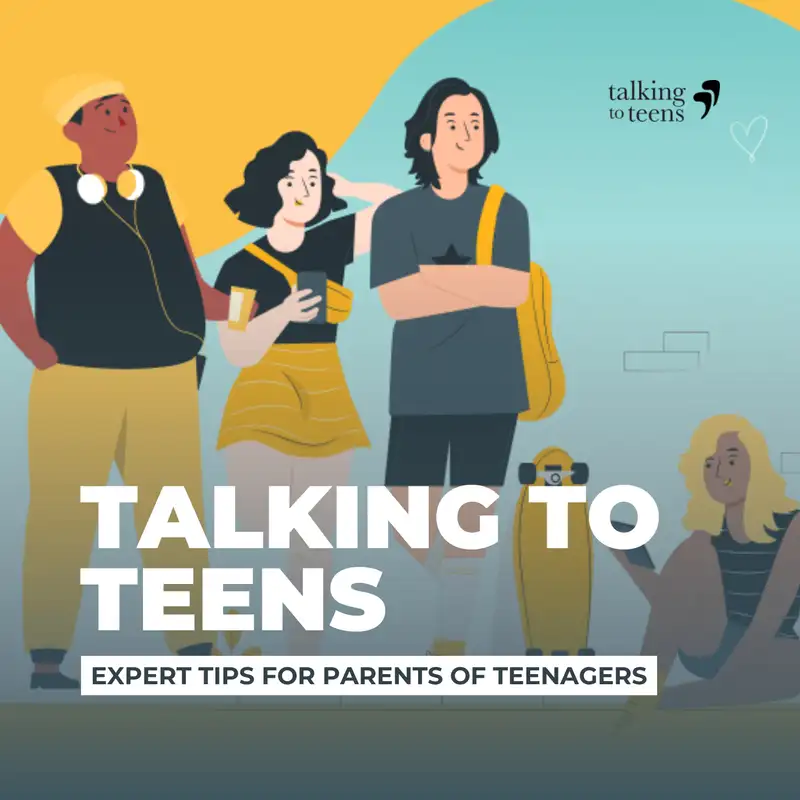Ep 294: Understanding Gender Beyond the Binary
Diane Ehrensaft, author of "The Gender Creative Child," joins us to discuss the complexities of gender identity and expression in today's teens, offering parents insights on how to support their children through gender exploration and creativity.
Full Show Notes
Full Show Notes
When it comes to raising teenagers, one of the most complex and delicate topics parents may face is the evolving concept of gender. In today’s world, many young people are exploring gender creativity, challenging traditional norms, and seeking to express their true selves in ways that might be daunting for their parents to understand. Navigating this landscape requires empathy, open-mindedness, and reliable information to help ensure that teens feel supported and validated in their journey.
For parents, the idea of kids thinking beyond the male-female binary or even the spectrum can seem overwhelming. Gender today is more like a web, interwoven with threads of nature, nurture, and culture. Each child's gender identity and expression are unique and evolving, often influenced by their experiences and interactions. How can parents help their teens weave these complexities into a coherent and authentic sense of self?
To shed light on this, we’re joined by Dr. Diane Ehrensaft, a developmental and clinical psychologist, the co-founder and director of the Child and Adolescent Gender Center, and an associate professor of pediatrics. Diane’s work has been featured across numerous reputable platforms, including the New York Times and NPR. She’s also the author of "The Gender Creative Child." Diane is here to offer her expert insights on how teens and their families can navigate gender creativity.
Understanding the Gender Web
Diane introduces the concept of the "gender web," a more dynamic and multi-dimensional way to think about gender, beyond linear spectrums and binary boxes. Using three major threads—nature (biological aspects), nurture (environmental influences), and culture (societal norms)—Diane suggests that every person's gender web is uniquely woven, constantly evolving over time. This web model helps us appreciate the complexities of gender and underscores the importance of allowing space for this evolution in our children.
Breaking Away from Boxes
Instead of confining identities to rigid categories like "boy" or "girl," a more flexible approach can be incredibly liberating for kids. Diane shares fascinating anecdotes of children who have described themselves using terms like "gender hybrid" and "gender smoothie." These self-descriptions reflect an understanding of gender that goes beyond traditional norms. Diane emphasizes the importance of respecting both the fluid and stable aspects of a child's gender identity.
Apples, Oranges, and Fruit Salads
Diane explains different gender identities through her "apples, oranges, and fruit salads" metaphor. Children who have a clear, stable gender identity from an early age are the "apples." "Oranges" are those who explore their gender creatively but without a persistent disconnect from their assigned gender. "Fruit salads" mix both gender identity and expression in unique ways. Understanding these distinctions can help parents better support their teens, regardless of where they fall on this spectrum.
The Role of Parents: De-centering and Support
Parenting a gender-creative child also involves self-reflection and emotional intelligence. Diane discusses the importance of "de-centering," where parents set aside their own ambitions and expectations to better listen to and support their child’s expressed needs and identities. Recognizing and addressing our own unconscious biases and microaggressions is also critical to fostering a supportive environment.
Medical Interventions
For parents considering medical support for their gender-creative teens, Diane provides clarity on the types and timing of medical interventions, including puberty blockers and hormone replacement therapy. These interventions are carefully considered and catered to each individual, with a rigorous assessment process to ensure they are in the best interest of the child's welfare.
In the Episode...
Dr. Diane Ehrensaft’s expertise offers a valuable guide for parents seeking to support their gender-creative children. In our conversation, we also discuss:
- The importance of understanding and using the right terminology
- How teens can explore their identities safely and responsibly
- The cultural shifts influencing how we see gender today
- The role of online communities and how they impact gender exploration
If you found this conversation enlightening, don’t miss out on Diane’s forthcoming book "Gender Explained," co-authored with Michelle Jerkowitz. Stay connected with Diane via her website, dianeehrensaft.com, for more insights. Thanks for listening! Don’t forget to share, subscribe, and join us next week.
Creators and Guests

Guest
Diane Ehrensaft
Developmental/clinical psychologist; Director of Mental Health, Child & Adolescent Gender Center, Associate Professor of Pediatrics, UCSF; Author


